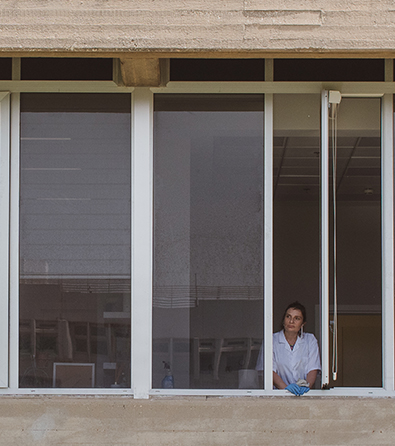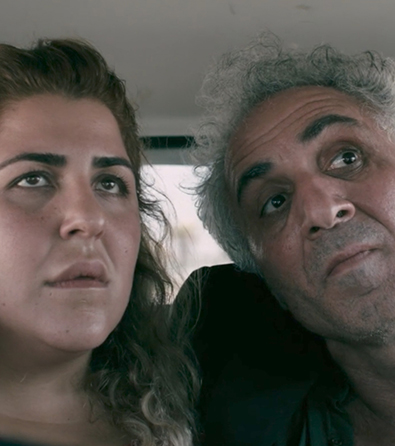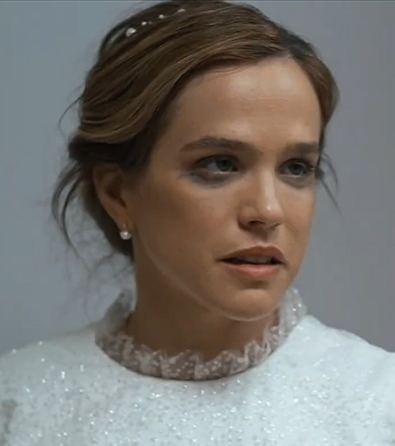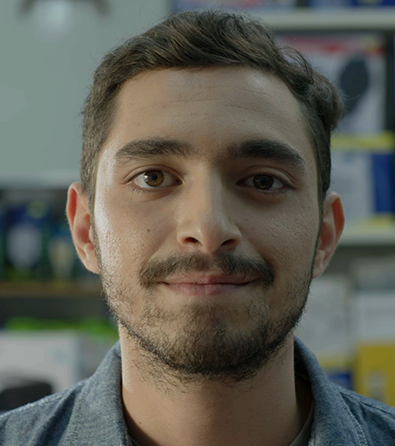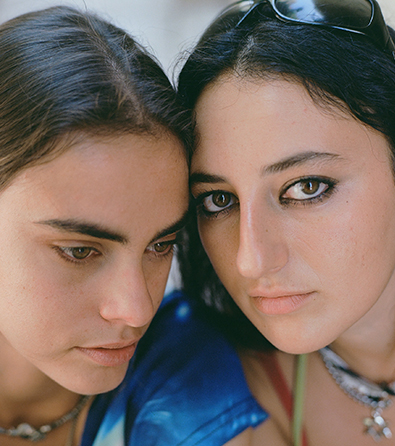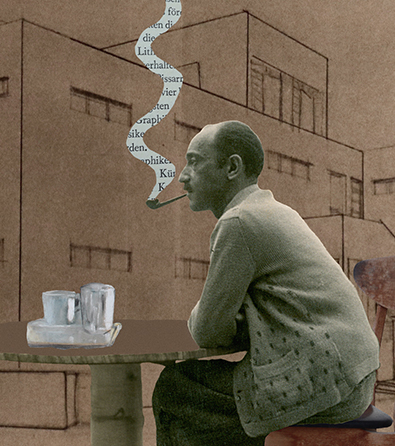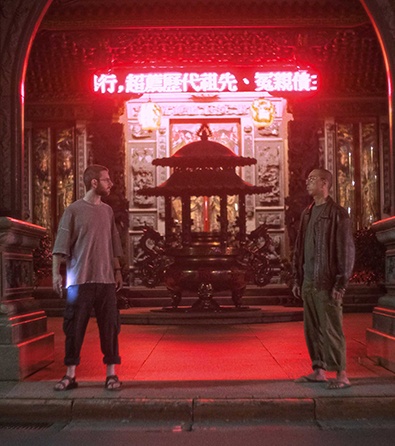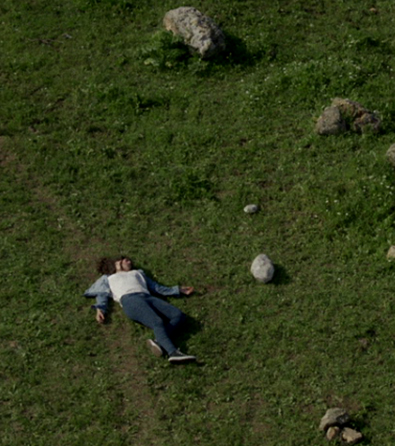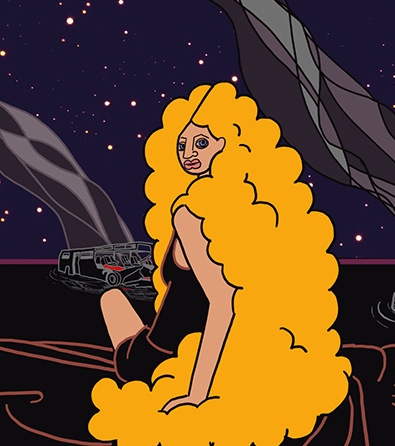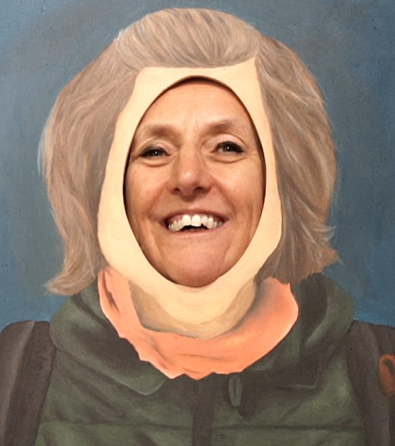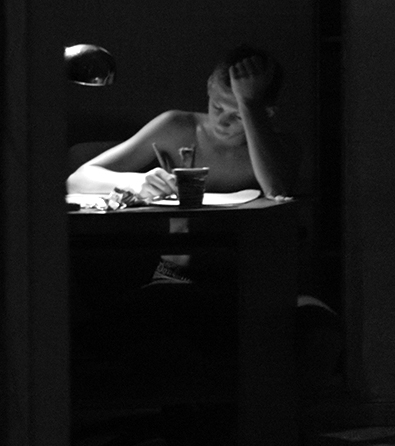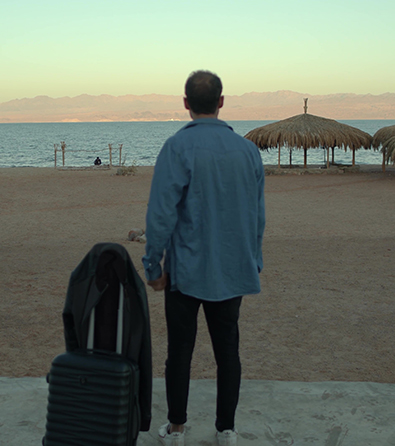The short film Three Things Lost (14 minutes) is available at the top of the page.
* To watch this film, please approve YouTube/Vimeo cookies via the blue cookie icon at the bottom left of the screen
In Israel’s contemporary creative industries and art scenes, documentary cinema that defies industry-standard formulas, those often considered to hold commercial potential, is a rare find. There is a noticeable divide between what is classified as documentary filmmaking and less conventional visual practices, typically found in the domains of video art and experimental cinema.
Generally, short films bridge this unfortunate dichotomy more effectively than feature-length works. Three Things Lost (2019) by Naama Shohet is a striking example of such a film. One might define it as a brief biographical documentary dealing with the life of the author Yitzhak Bar-Moshe — Shohet’s grandfather. Fittingly, the film employs techniques commonly associated with documentary biographies, such as interviews with Bar-Moshe’s widow (Shohet’s grandmother), archival television footage, and home movies. However, Shohet’s key focus lies in the use of creative experimental techniques that deconstruct the traditional biographical narrative before it even solidifies. This artistic approach can be interpreted as Shohet’s visual attempt to forge a spiritual, creative connection with her grandfather, who passed away in 2003 when she was still a child.
On a biographical level, Three Things Lost encapsulates, with impressive conciseness, key moments from Bar-Moshe’s life within a tight 14-minute frame. Born in Iraq in 1927, Bar-Moshe, a Jewish man, immigrated to Israel in 1950. He worked in various roles in Arabic-language Israeli media before embarking on a literary career, writing primarily in Arabic. Only a few of his works were translated into Hebrew. In the archival interview included in the film, Bar-Moshe discusses his deep bond with the Arabic language, calling it his “first and last love.” When the interviewer inquires whether he struggles with identity conflicts stemming from his Arab upbringing and Israeli citizenship, Bar-Moshe dismisses the notion outright, stating, “These are political problems created by politicians. In my view, such issues are bound to disappear.” As his widow Norma reflects later in the film, Bar-Moshe had remained deeply optimistic about the Israeli-Palestinian peace process. However, when hopes for dialogue disintegrated, Bar-Moshe and Norma left Israel for the UK. They oscillated between the two countries for a year and a half until Bar-Moshe died suddenly while out walking near his home in Manchester.
Shohet weaves these fragments of life with short, poignant excerpts recited in Arabic by Norma. These passages form the structural backbone of the film, dividing it into three parts, each reflecting on a different form of loss. The first excerpt, taken from one of Bar-Moshe’s short stories, recounts how, one day, while walking down the street toward his home, the narrator is shocked to discover that his house has disappeared. In the second excerpt, a similar disappearance occurs, but this time it’s a mailbox that vanishes. This haunting parallel — which most likely has been formulated by Shohet based on her grandfather’s original excerpt —echoes the eerie fact that Bar-Moshe’s sudden death occurred beside a mailbox in his Manchester neighborhood, likely just after he had posted a letter. The third excerpt, which may or may not be documentary, features Norma sharing that, five years after her husband’s death, she searched his study for a prayer necklace precious to him, only to find that it had disappeared.
This recurring theme of the surreal vanishing of ordinary objects reflects a key element of Bar-Moshe’s literary work. As scholar Geula Elimelech explains in her essay “Fantasy as ‘Recovery, Escape, and Consolation’ in the Short Stories of Isaac Bar-Moshe,” the foundation of fantasy in his stories is deeply rooted in nostalgia for the old world of Iraq, where spiritual elements —demons, fairies, and magic — were integral to both religion and folklore. In the excerpt used in Shohet’s film, Bar-Moshe’s profound sense of longing is conveyed almost directly through the allegory of the missing house, written by an author who had left his home twice in his life, each time having parts of his identity torn away by social and political realities.
For Shohet, another missing element seems to be her grandfather himself. The film captures his home in Jerusalem, his study, his photographs, and the stamps he used. These are static shots, portraying the belongings of a man who is no longer there. When Bar-Moshe finally appears in the film, it is through an interview conducted for an Israeli Arabic-language TV channel, seen on the screen of a computer placed on his desk — framed within a frame, symbolizing a double layer of separation. Shohet uses this screen to present additional footage seemingly unrelated to Bar-Moshe’s life: rushing water in a large stainless-steel bowl, light wooden blocks tossed into the whirlpool, bubbles in a white foamy substance, and papers stacking on top of each other — perhaps documenting a paper factory.
Paper plays a central role throughout the film. It forms Bar-Moshe’s passport, with its stamped pages on display; it is the envelope shown in animation, reminding us of the letter Bar-Moshe likely posted on the day he died. Paper also dominates the mysterious opening sequence, where a gradual visual effect transitions from left to right, from black to white, accompanied by mechanical sounds. This visual effect mimics what will later be revealed as the scanner on Bar-Moshe’s desk, opening, and closing, seemingly on its own. In the opening scene, the scanning effect repeatedly reveals a strange white bump, possibly a drop of water or milk, that grows until it transforms into a page from a book, inscribed in Arabic. A page from Bar-Moshe’s work.
Paper — her grandfather’s creative material, now captured in video form on a screen — becomes, in Shohet’s hands, a bridge between their worlds. Two creators, linked by blood, both having lost things in life. He mourns his loss with words; she with images. He typed his words on the page, and now she imprints the images on paper. It is no coincidence that the image she chooses is the red mailbox, a kind of distant monument to the life and death of Bar Moshe. In one sequence, an invisible hand finds the mailbox on Google Maps street view, copies it into Photoshop, cuts it out, and leaves a black hole where it once stood, surrounded by a faint reddish glow.
All of this is executed on a laptop placed on Bar-Moshe’s desk, with his face still visible on his computer screen. As one screen is placed beside another, the viewer’s eye is pulled away from the content, made aware of the materiality of the frames, the split, the separation, and the duality of identity. The invisible hand prints the image of the mailbox and, using the scanner, stretches and smears the image until, in a single cut, it morphs into the image of the West Bank Separation Barrier.
The Separation Barrier, whose construction began in 2002 around the time Bar-Moshe moved to Manchester, was a concrete wall dividing Israel and the West Bank, following a route dictated by Israel. By turning the image of the mailbox into an image of the Separation Wall, Shohet replaces the symbol of communication with one of disconnection. Or perhaps she presents the wall as a continuation, not a contrast, to the mailbox monument — the symbol of the death of a man who embodied a fusion of cultures, languages, and beliefs, a fusion that, as Bar-Moshe said, only politicians made us believe was impossible.
The image of the Separation Wall is seen accompanying the virtual walk in Google Maps, acting as an impenetrable concrete barrier, until the journey ends at the black hole left by the vanished mailbox. A wet mass of paper covers the scanner in Bar-Moshe’s study, as if the pages have disintegrated into another form, as if the illusion of the page’s wholeness has been shattered, returning to its primal state, just as humans return to dust.
In the film’s final moments, as Norma recites the passage about the missing prayer necklace, the computer screen in Bar-Moshe’s study shows a video of a rotating chain made of paper clips. We saw these clips earlier, resting in a bowl on the desk, later moving in a chain across the desk’s surface, as if animated by the invisible hand — or perhaps by demons or fairies from Iraqi folklore. Perhaps these paper clips, designed to bind separate sheets together, allow Shohet to bind her grandfather’s life to her own. Perhaps by creating this paper clip chain as a substitute for the lost prayer necklace, she rekindles his lost faith and claims it as her inheritance.
In the closing frame, the paper clip chain on her grandfather’s computer screen is replaced by the image of a bead necklace. The missing necklace has returned, and a woman’s hand reaches into the screen, grasps it, and pulls it away. Perhaps this is a final affirmation — the unification of identities, cultures, and peoples — reimagined with material from the realm of writing, and of visual image.
Three Things Lost was produced as part of Naama Shohet’s undergraduate final project at the Department of Screen-Based Arts, Bezalel Academy of Arts and Design, in 2019.
